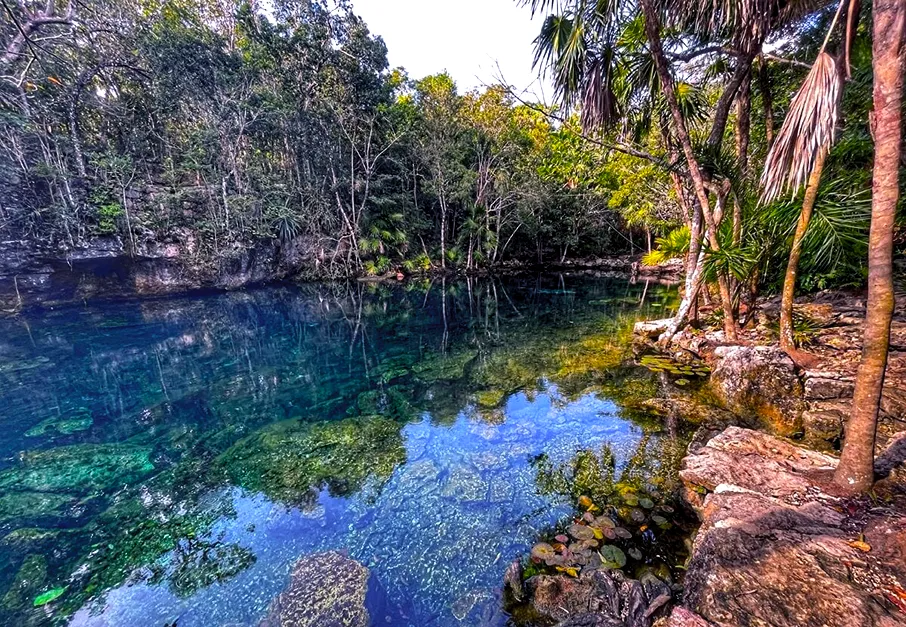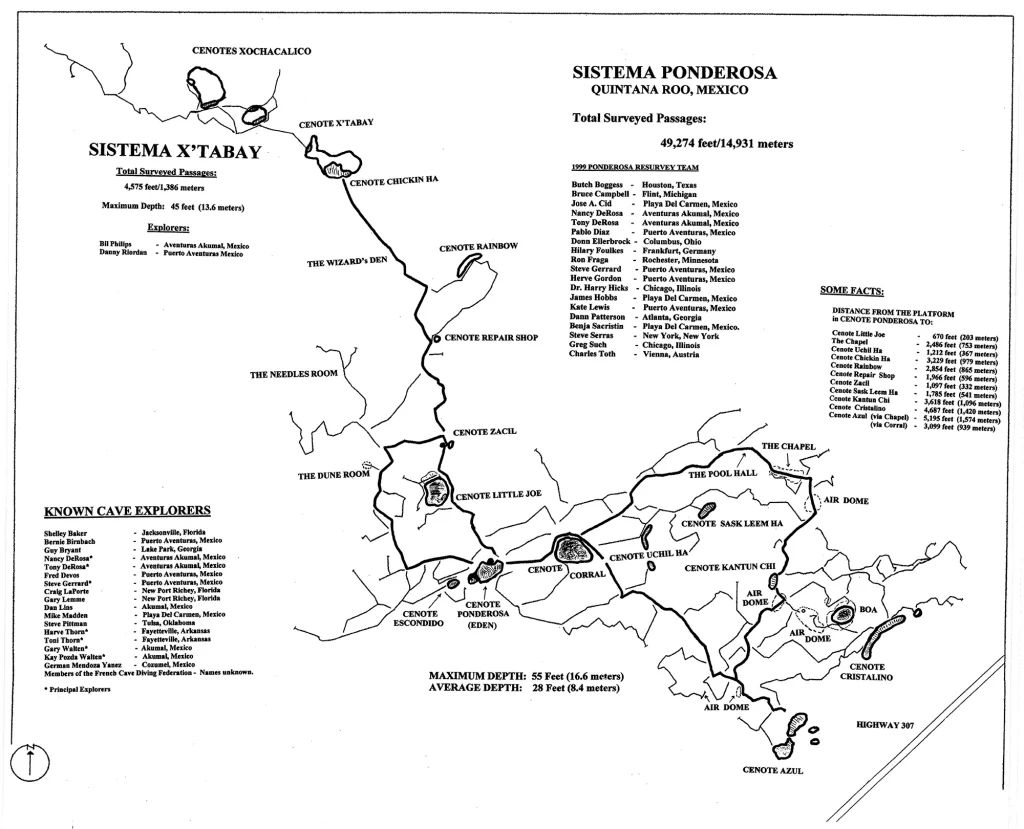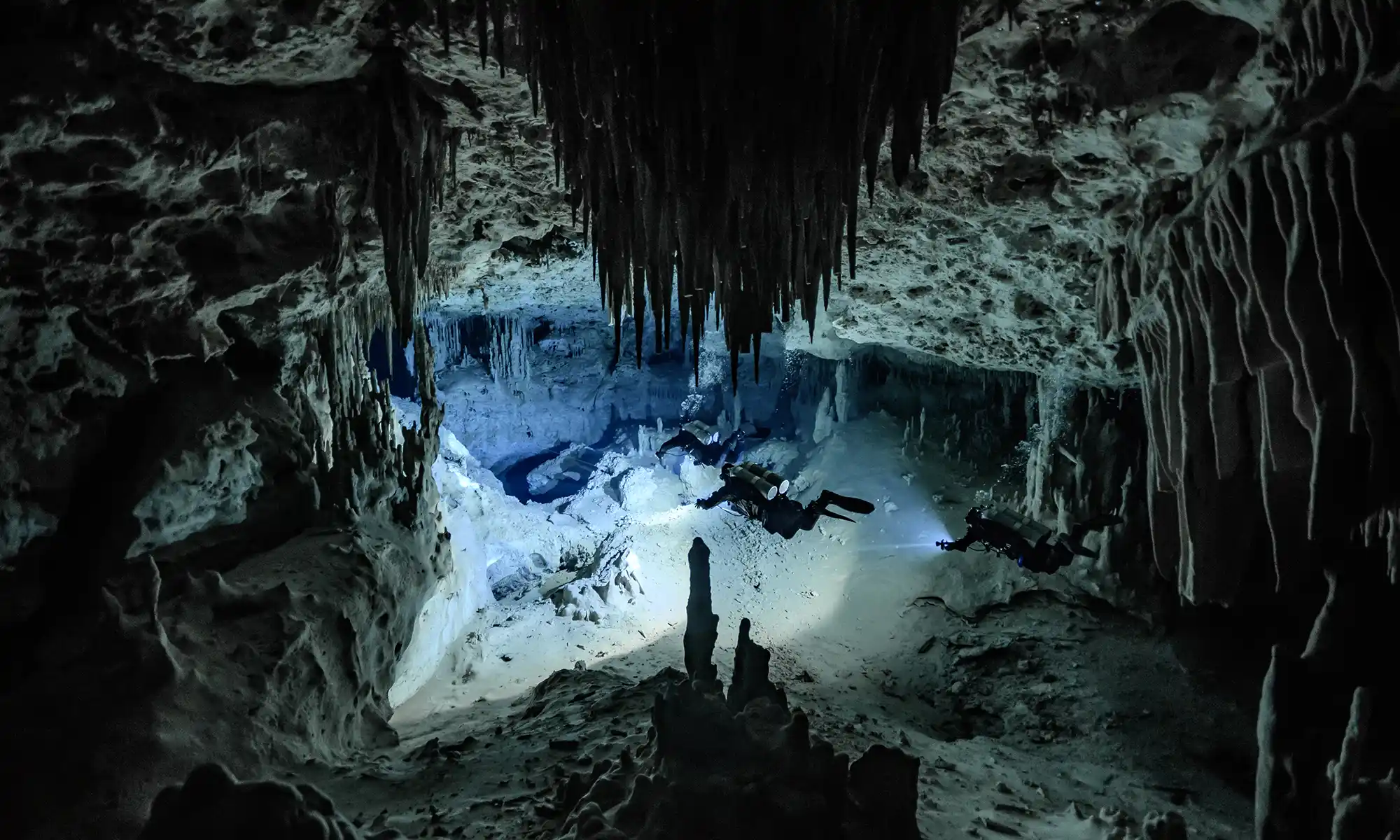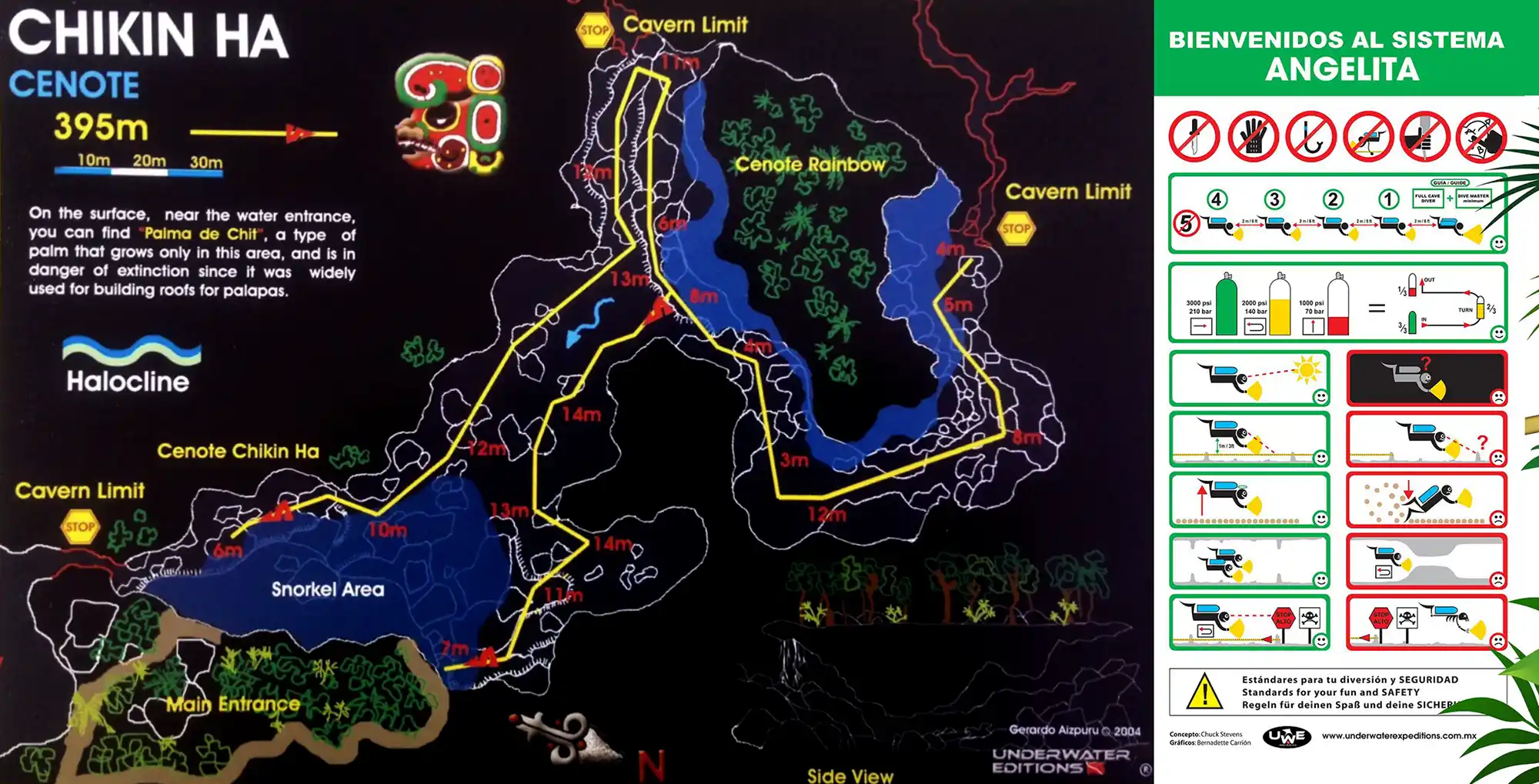Cenote Chikin Ha is a nature park complex where you can enjoy 3 spectacular cenotes of different types in one place. Only two of the three cenotes we will discuss in a minute are suitable for swimming and diving.
A little further away, the third one (Cenote Ta’ak Bil Ha) is only used for ceremonial purposes. However, you can still visit and enjoy the views of the clear waters and the tranquility of the place.

The first cenote (X’Tabay) is great for relaxing, swimming, and cave diving. The second cenote (Chikin-Ha) is great for swimming, cavern and cave diving. Both are suitable for families too. You can spend the entire day and enjoy the local facilities.
X’Tabay cenote
Cenote X’Tabay is the first one you will meet when you walk from the reception desk. You will see a beautiful open cenote surrounded by lush greenery, including ceiba trees, palms, and alamos, which reflect in the crystal clear waters. The shallow water is suitable for kids to swim in and play in but for anybody to relax and snorkel.
Fish, turtles, and water lilies swim in the cenote’s pristine waters, and colorful birds chirp. Visitors can also sit on the beaches or by the water and soak in the natural environment.
From the X’tabay cenote cave, certified divers can reach the entire Ponderosa cave system and dive into other well-known cenotes: Zacil cenote, Little Joe cenote, El Eden cenote, Corral cenote, Azul cenote, and Cristalino cenote, as well as many other small cenotes in the entire Ponderosa cave system.
This cave system has fresh and saltwater zones, with the halocline beginning at 33 ft (10 m). There are vivid displays of freshwater drainage. The saltwater areas are typical examples of white Swiss cheese, while the freshwater shows much in decorations and speleothems.

X’tabay means spirit of a woman in the Mayan Language “ix” meaning “woman” and “tabay” meaning “spirit”. X’tabay is part of a Yucatec Maya folklore tale about a demonic femme fatale who lures men to their deaths in the Yucatán Peninsula.
Chikin-Ha cenote
Chikin-Ha cenote is the main cenote of the park and the most appealing because you get to swim in a natural tunnel made of the millenary limestone rock formation and come out on the other side.
It looks like there are two cenotes, but there is just one split in two by a cave, making great entertainment for adventure lovers.
Cave divers love to explore these flooded caves, and you will likely see some divers getting ready for their immersion in the deep. Also, two cavern lines are located in Chikin Ha cenote, making it available for Open Water Divers.
On a sunny day, the cenote is particularly spectacular as the sun’s rays hit the water, offering incredible views under the surface. The cenote’s colors vary throughout the day depending on the light reflecting on it.
Chikin Ha means, “water from the east” in the Mayan Language.
Ta’ak Bil Ha Cenote
Not to confuse with the Taak Bi Ha cenote, another amazing cenote located near cenote Dos Ojos, Cenote Ta’ak Bil Ha, is a little further away from the other two cenotes within the Chikin Ha area. Unbelievable how much a difference a tiny letter can make! 🙂
Cenote Ta’ak Bil Ha is not swimmable because it’s mainly used for ceremonies honoring the ancient Mayan tradition.
However, you can visit the cenote, and we recommend it. It’s just a short walk from the cenote Chikin-Ha, and the path is very well marked. A short set of stairs will take you down into the underworld to the semi-open cenote. The water runs around a sort of island full of trees and plants.
In the cenote, you can appreciate the crystal clear water and the roots of the Alamo trees making their way through the rocks into the water, creating spectacular landscapes. It’s a great place for photography.
If you stop for a while, you may be lucky to find spectacular birds passing by, including the sacred bird Mot Mot.
While cavern diving from the Chikin Ha cenote, your underwater path also brings you to the Ta’ak Bil Ha cenote. So, you have a great opportunity to observe this spectacular cenote underwater and above the surface.
Ta’ak Bil-Ha means “hidden water” in the Maya Language
Our Ponderosa system cave diving video
Ponderosa system cave lines map

Chikin Ha Cenote location map
The first explorers were Nancy DeRosa, Tony DeRosa, and Steve Gerrard in July 1990.
Other explorers were Shelly Baker, Bernie Birnbach, Mauro Bordigon, Steve Bogearts, Guy Bryant, Fred Devos, Pablo Diaz, Craig LaPorte, Gary Lemme, Dan Lins, Mike Madden, Bil Philips, Steve Pittman, Daniel Riordan, Harve Thorn, Tony Thorn, Gary Walten, Kay Walten, German Yanez, and others.
Back



